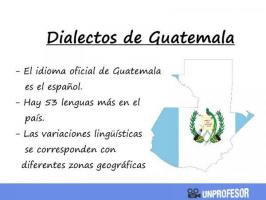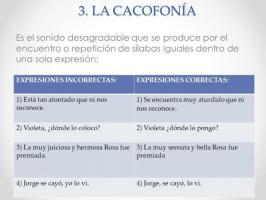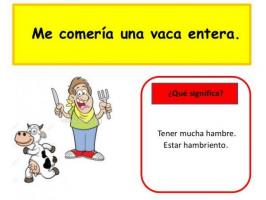All LANGUAGES and DIALECTS of Spain
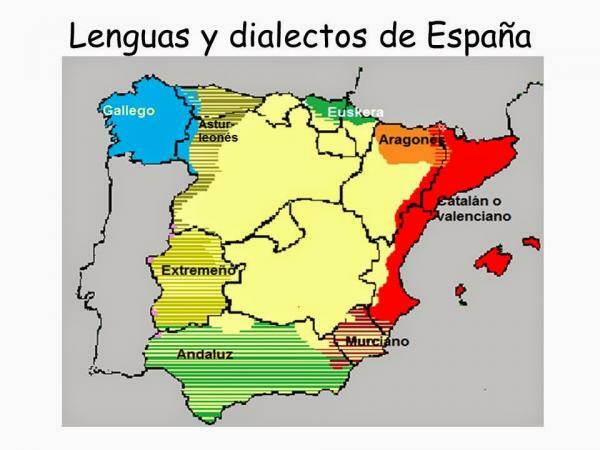
Image: Google Sites
In Spain several languages and dialects coexist that contribute cultural and linguistic diversity. In the first place and to know what these are, it is necessary to know the difference between what is considered language and dialect. From a PROFESSOR we want to help you solve your doubts about this issue through this lesson in which we offer you a summary of the languages and dialects of Spain. We started!
Index
- Difference between language and dialect
- Languages in Spain
- The dialects of Spain
- Catalan, one of the languages of Spain
- Galician, a co-official language of Spain
- Euskera, another language of Spain
Difference between language and dialect.
First of all, and before explaining which are the languages and dialects of Spain, it is convenient to define the difference between them.
- Is considered language to an articulated symbol system that is used to communicate in written or oral form. Here we will meet the major languages, that is, Spanish, English, French, Italian... etc. which as such cannot be considered pure, since they are made up of different dialects.
- Therefore, dialects they are a set of several linguistic systems that have a common root in the same language that is limited by a specific territory. That is, they are variations of a language or language that is spoken in a limited place. Because dialects are found within the language, they cannot be considered as a language.
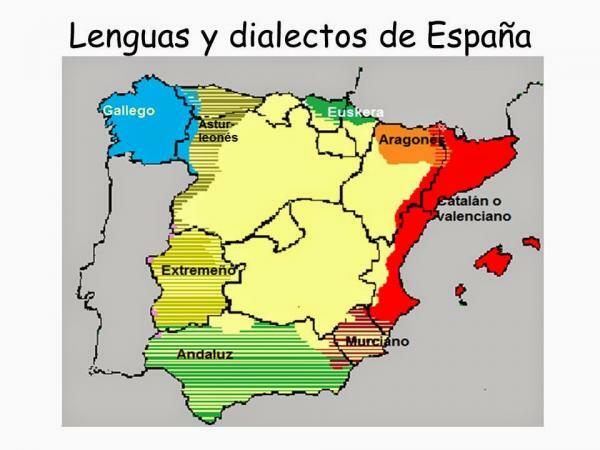
Image: Slideshare
Languages in Spain.
Now that you know the difference between language and dialect, we can begin to reel off those who live in our country. The official language of the State is SpanishTherefore, it is considered as a mother tongue and is spoken by all the inhabitants of the territory.
In Spain, there are different co-official languages, which have the same category as Spanish since their use is carried out in some autonomous communities simultaneously with Spanish. In Spain, therefore, there is an official language and three co-official languages, which are: Basque, Galician and Catalan.
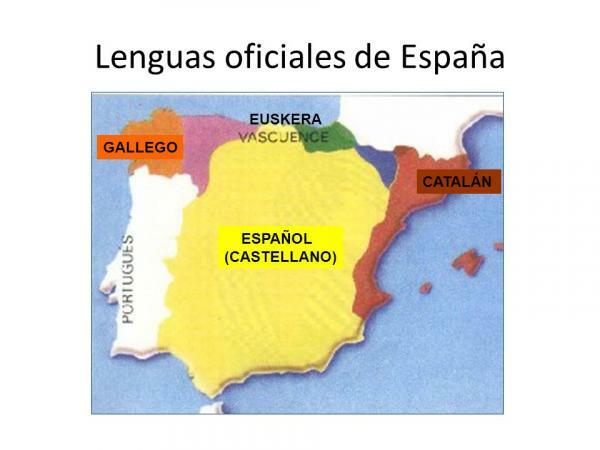
Image: Slideplayer
The dialects of Spain.
Our country is divided into two language zones, the northern and the southern one in which different dialects from Castilian.
The main difference between the different dialects, if we focus on a general classification marked by the place in which they are spoken has to do with the s at the end of the syllable that in southern Spain it becomes a h aspirate, while in the north it is pronounced. This is simply, the most notable difference between them, the rest, has to do with the use of words own or grammatical constructions derived from a specific geographical area.
Therefore they would be divided as follows:
- Northern dialects: are those that speak in the northern half of the peninsula and are made up of northern Castilian, Leonés, Churro, Aragonese and Riojano.
- Southern dialects: These dialects are spoken in the southern half of Spain and are Madrileño, Extremadura, Manchego, Murciano, Andaluz and Canario.
Catalan, one of the languages of Spain.
It occurs in the northwest of the Iberian Peninsula and arises as a evolution of vulgar latinTherefore, it is a Romance language that derives directly from the previous one. Although at first this language was only spoken in Catalonia, its use was extended to the Kingdom of Valencia and the Balearic Islands during the reconquest. Among its most outstanding features we find:
- Consonantism: the l Initial words are palatalized, that is, voiced consonants are lost and voiceless ones are voiced. We see a very clear example in the word Lengua, which in Catalan is llengua.
- His lexicon it is much closer to Latin than Spanish and many words that are used today have a form very similar to that of the language from which they come.
- Vocalism: this is the tendency to close or lose all final vowels.
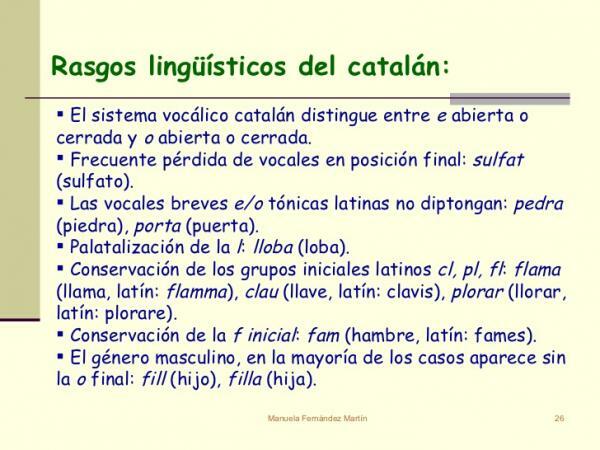
Image: Slideshare
Galician, a co-official language of Spain.
Galician is another of the languages of Spain. It is considered that Its origin is Galician Portuguese and that arises as a result of the evolution of vulgar Latin used in the northwest of the Iberian Peninsula. Alfonso X used this language to write his Cantigas a la Virgen, so the importance of it became very clear, causing a great boom in literature written in Galician Portuguese.
Galician is spoken throughout Galicia and in some areas of the neighboring provinces. Its main characteristics are:
- Conservation of Latin diphthongs: ou Y ei.
- They have seven vowels: in addition to the five in Spanish, they have open and closed variations of e and o.
- Syntax and lexicon from Latin: it preserves the Latin forms in a more pure way than the Castilian and incorporates words of Celtic and Germanic origin.
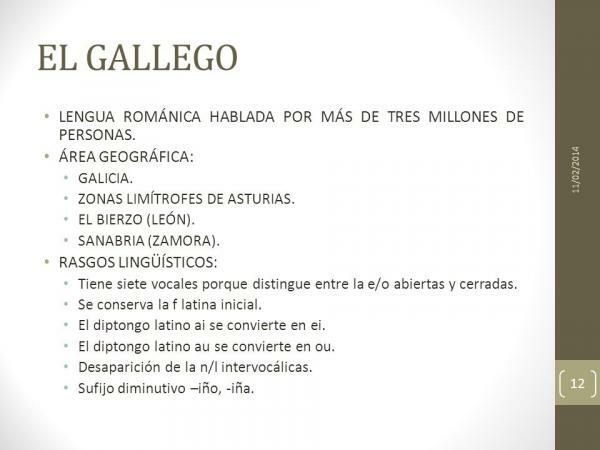
Image: Slideplayer
Euskera, another language of Spain.
Basque is a co-official language in Spain, therefore, it will be used officially and in parallel with Spanish in the Basque Country. This language does not belong to the Indo-European language family and its origin seems to be linked to Caucasian languages from Turkey or Russia.
This language has some peculiarities:
- Mobile accent.
- Count on 5 vowels.
- Patient subject.
- Have declines like latin
- Use of particles to indicate the passive voice and verb modes.
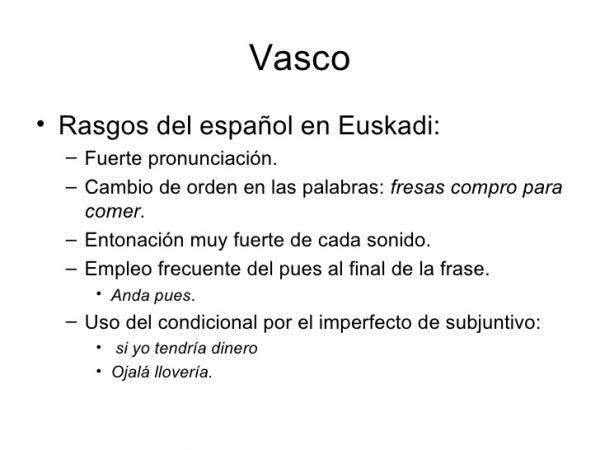
Image: Slideshare
If you want to read more articles similar to Languages and dialects of Spain: summary, we recommend that you enter our category of Grammar and Linguistics.

